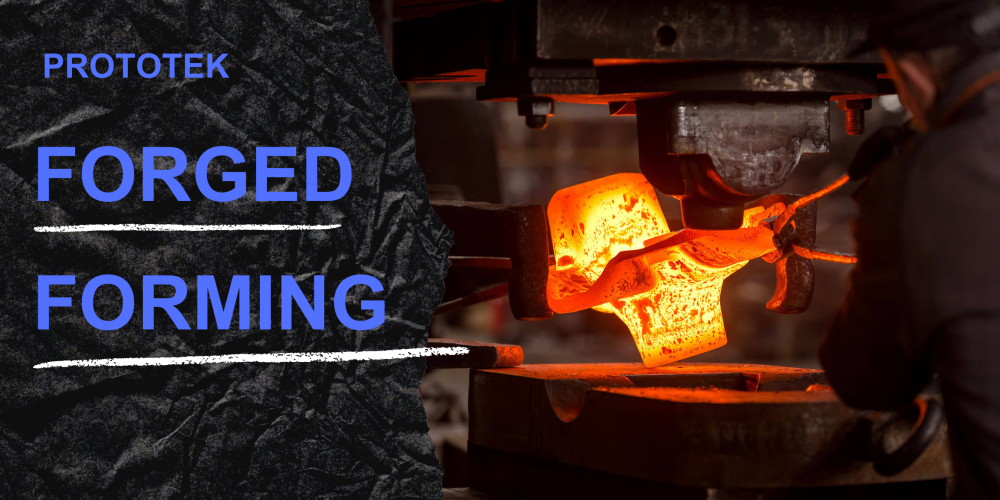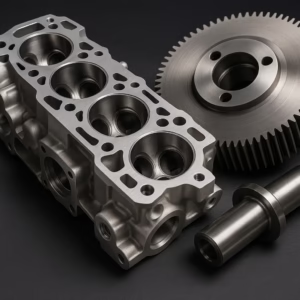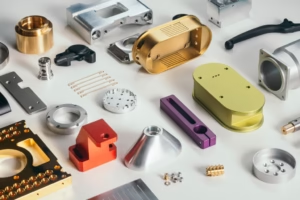Blog Details
Forged Forming
Forged forming, a metalworking process involving the application of pressure to reshape metals has become indispensable across various industries. From automotive manufacturing to aerospace engineering and construction, forged forming techniques play critical roles in shaping metals to meet specific requirements. This paper thoroughly reviews forged forming techniques, their applications, advantages, and future prospects. The review encompasses cold and hot forging methods, their principles, and their respective applications in diverse industries. Additionally, it explores the advancements in forged forming technologies, including the integration of artificial intelligence and robotics, and their potential impact on future manufacturing processes.
Forged Forming Techniques
Cold Forging: Principles and Applications
Cold forging is a metalworking process performed at or near room temperature. In this process, the metal is shaped using dies under high pressure. The process involves deforming the metal without heating it significantly, improving dimensional accuracy and surface finish. Cold forging is commonly used for producing small to medium-sized parts with intricate shapes, such as bolts, nuts, and automotive components like gears and shafts. The advantages of cold forging include enhanced mechanical properties, reduced material waste, and minimal post-processing requirements.
At Prototek, cold forging is widely used in various industries to produce small to medium-sized components with high dimensional accuracy and surface finish. Some specific applications of cold forging include:
Automotive Components
Prototek extensively uses cold forging in the automotive industry for manufacturing a wide range of components, including bolts, nuts, screws, and shafts. These components are critical for the assembly of engines, transmissions, steering systems, and suspension systems in vehicles. Cold forging offers improved mechanical properties, cost-effectiveness, and high production efficiency.
Aerospace Fasteners
Prototek employs cold forging in the aerospace sector for producing high-strength fasteners such as bolts, rivets, and screws used in aircraft assembly. These fasteners require precise dimensions, excellent surface finish, and superior mechanical properties to ensure the safety and reliability of aerospace structures. Cold forging enables the production of aerospace fasteners with tight tolerances and high strength-to-weight ratios.
Electrical and Electronic Components
Prototek utilizes cold forging to manufacture electrical and electronic components, including connectors, terminals, and contact pins. These components require precise shaping and dimensional accuracy to ensure proper functionality and reliability in electrical circuits and electronic devices. Cold forging allows for the mass production of high-quality electrical and electronic components with consistent performance.
Consumer Goods
Prototek uses cold forging to produce various consumer goods, such as tools, hardware, and appliances. Components like wrenches, screwdrivers, hinges, and door handles are often manufactured using cold forging due to their durability, precision, and cost-effectiveness. Cold forging enables the production of intricate shapes and designs with minimal material waste.
Cold forging is favoured for applications requiring tight tolerances, excellent surface finish, and high production volumes. Its versatility and efficiency make it a preferred choice across industries where precision-engineered components are essential.
Hot Forging: Principles and Applications
Hot forging, in contrast to cold forging, involves heating the metal above its recrystallization temperature before shaping it using dies and presses. This process allows for greater deformation without the risk of work hardening and enables the forging of complex shapes and larger components. Hot forging is particularly suitable for materials with high strength and low ductility, such as alloy steels and titanium alloys. Common applications of hot forging include aerospace structural components, automotive crankshafts, and industrial machinery parts. The main advantages of hot forging include improved material flow, better formability, and reduced energy consumption compared to cold forging.
Prototek employs hot forging in shaping metal parts by heating them above their recrystallization temperature and applying compressive forces using dies and presses. This process is suitable for producing large, complex components with superior mechanical properties. Some specific applications of hot forging include:
Aerospace Structural Components
Prototek extensively uses hot forging in the aerospace industry to manufacture critical structural components such as turbine disks, landing gear parts, wing spars, and engine mounts. These components require high strength, fatigue resistance, and dimensional stability to withstand the demanding conditions of aerospace operations. Hot forging ensures the uniform flow of material and the formation of fine-grained microstructures, resulting in parts with enhanced mechanical properties.
Automotive Crankshafts
Prototek employs hot forging to produce automotive crankshafts, essential components of internal combustion engines. Crankshafts undergo significant mechanical stresses during engine operation, requiring them to be made from materials with high strength and fatigue resistance. Hot forging allows for the production of crankshafts with complex geometries, precise tolerances, and improved mechanical properties, ensuring reliable engine performance.
Industrial Machinery Parts
Prototek uses hot forging to manufacture various components in industrial machinery, such as gears, shafts, couplings, and valves. These components are subjected to heavy loads, high temperatures, and abrasive environments in industrial applications. Hot forging enables the production of parts with enhanced strength, wear resistance, and dimensional accuracy, contributing to industrial equipment’s overall reliability and efficiency.
Oil and Gas Equipment
Prototek employs hot forging in the oil and gas industry to produce components used in drilling, extraction, and processing operations. Parts such as drill bits, wellhead components, valves, and pipeline fittings require high strength, corrosion resistance, and toughness to withstand harsh operating conditions. Hot forging allows for the fabrication of robust components with superior metallurgical properties, ensuring the integrity and safety of oil and gas infrastructure.
In summary, hot forging is favoured for applications requiring large, complex components with superior mechanical properties and resistance to extreme conditions. Its ability to produce parts with refined microstructures and enhanced mechanical properties makes it indispensable in industries where reliability and performance are paramount
Comparison of Cold and Hot Forging Methods
Cold and hot forging offers distinct advantages and is chosen based on material properties, part geometry, and production requirements. Cold forging is preferred for smaller parts requiring high dimensional accuracy and surface finish, while hot forging is ideal for larger components with complex shapes and superior mechanical properties. The choice between cold and hot forging depends on material type, production volume, and cost considerations.
Advances in Forged Forming Technologies
Recent advancements in forged forming technologies have focused on improving process efficiency, product quality, and sustainability. These include developing advanced die materials, enhanced lubrication techniques, and integrating real-time monitoring and control systems. Additionally, research is underway to explore innovative forging processes such as warm forging, where the metal is heated to intermediate temperatures, combining the benefits of cold and hot forging. At Prototek, continuous innovation in forged forming technologies is driving improvements in manufacturing processes across various industries.
If you have any needs, contact us via email at Lynnyao@prototekparts.com or phone: +86-0792-86372550
Tags:
- metal forging, forged parts

























































